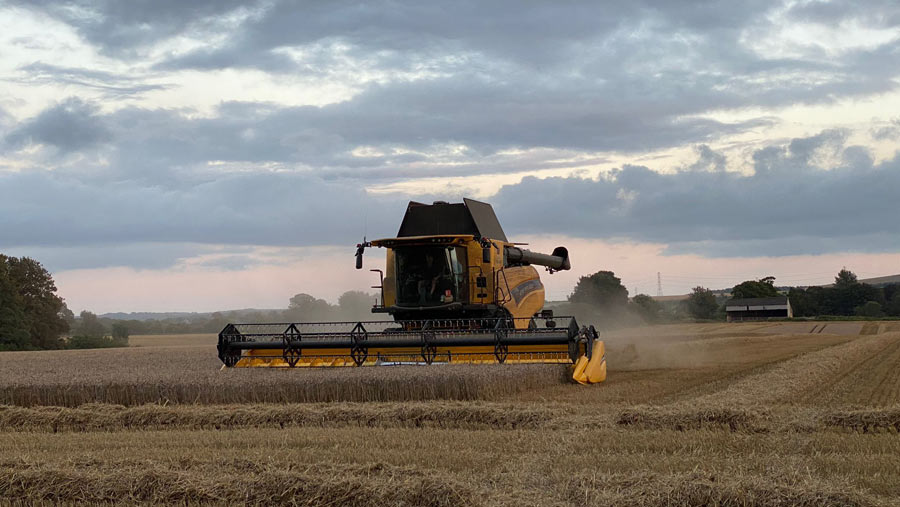Harvest progress slow, but dry spell helps catch-up
 Wheat harvesting at East Wick Farm © David Butler
Wheat harvesting at East Wick Farm © David Butler More than one-third of the total winter wheat crop area across Great Britain has now been cut, but farmers are still catching up on harvest due to variable weather.
The latest AHDB cereal harvest figures for the week ending 15 August show 37% of the winter wheat area has been harvested, which is below the five-year average of 56% usually completed by this stage in the season.
Scotland has not really got started on its winter wheat harvest yet.
See also: Harvest 2023: The 5 top-yielding winter wheat varieties map
Winter barley harvest is complete, while spring barley harvest is 24% complete. Oat harvest is 34% complete, and winter oilseed rape harvest is 98% complete.
Progress over the past week has meant that both crops are now ahead of the five-year averages of 28% and 93% respectively.
Since the latest figures were published by the AHDB, most regions have seen some good sunny spells, which has enabled much-needed harvest progress to be made.
According to the Met Office, the settled weather is expected to continue in most regions until Thursday 24 August, when rain is forecast in many regions.
Many growers are reporting average wheat yields and Hagbergs are falling, so there are growing concerns on quality for milling wheats that have not been cut yet.
Chichester Grain is a farmer-owned co-operative serving 32 arable farmers throughout Sussex and Hampshire, producing in excess of 30,000t wheat, barley, oats and oilseed rape and other crops.
Around 10% of the co-operative’s annual milling wheat production of 12,000t has been lost owing to the poor weather.
Milling wheat spec
Ian Blakeway from Chichester Grain said most milling wheat growers supplying the co-operative decided to cut winter wheat crops early, but they have paid hefty drying charges.
“The 2023 harvest is going to be remembered as one of the wettest in recent years – and wet weather is bad for breadmaking wheat,” he said.
“Farmers have been chasing Hagberg scores and for specific weight, we are going to have to see some adjustment there.
“Generally speaking, we’re seeing lower spec than normal. I’m guessing we’re going to see a shortage of top spec breadmaking wheat this year.”
Any milling wheat that does not meet specs will be added to the feed wheat heap, he added.
David Butler, who farms at East Wick Farm, Wootton Rivers, Marlborough, Wiltshire, said Hagbergs in his milling wheats were “a bit all over the place”, but were hovering around the “magic” 250 mark.
Therefore, he expects his crops to just about meet the spec.
However, winter wheat yields were “disappointing” and typically between 8-9t/ha, down from the usual 10-11t/ha.

